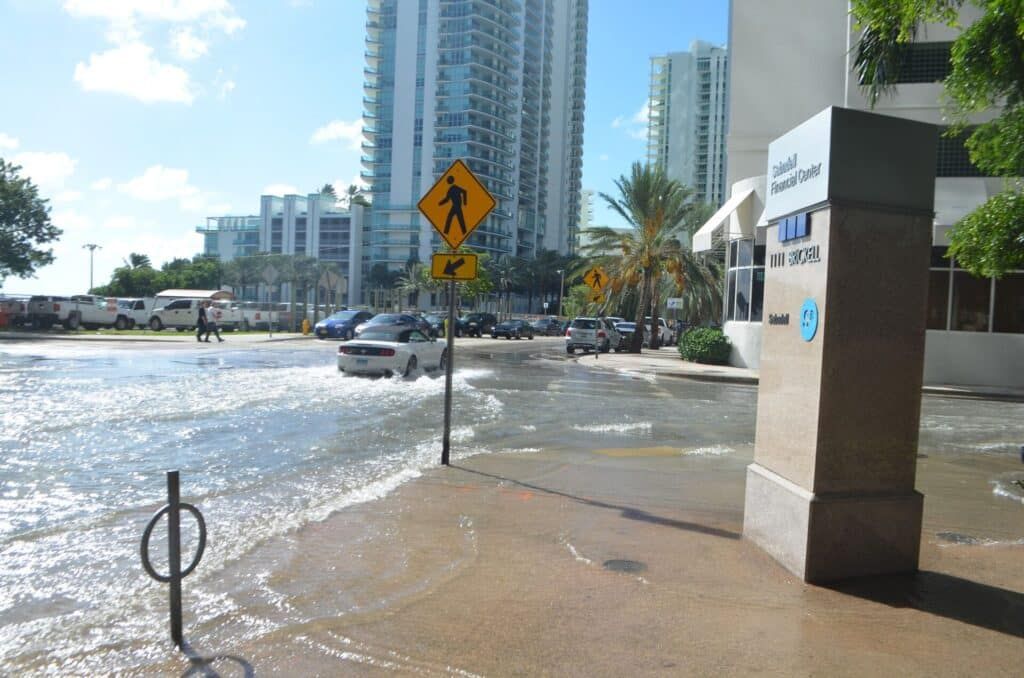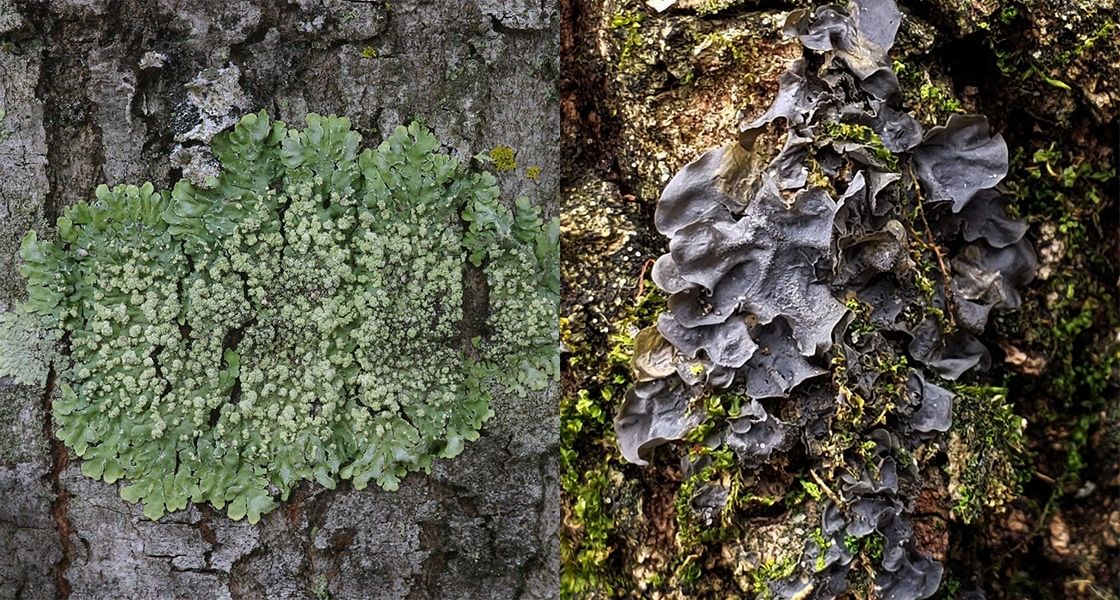Can lichens predict sea level rise?
By Ian Rose | March 3, 2023
 Sunny day high tide nuisance flooding in downtown Miami, Florida. Photo: B137/Wikipedia (CC BY-SA 4.0)
Sunny day high tide nuisance flooding in downtown Miami, Florida. Photo: B137/Wikipedia (CC BY-SA 4.0)
Editor’s note: This story was originally published by Hakai Magazine. It appears here as part of the Climate Desk collaboration.
The clock is ticking for many low-lying coastal areas. Sea level is rising faster than at any time in recorded history, promising to radically redraw the map. At a broad scale, we know this to be true. But knowing precisely which plots will be inundated and which will remain dry land is a much more daunting task. That effort may have an ally almost no one would have guessed: one of the smallest and least conspicuous forms of life—lichens.
More than 18,000 species of lichens have been described worldwide. Each is a community made up of one or more species of fungus and an alga or cyanobacteria. This combination has enabled lichens to survive in diverse and often hostile conditions, everything from tropical heat to bitter Antarctic cold.
To scratch out its niche, each species has developed to tolerate different levels of temperature, light, air quality, and other factors. Because of this sensitivity, lichens are already used by scientists to gauge environmental disturbance, such as the influence of logging or nitrogen pollution. Lichens also vary in their salt tolerance. It’s this property, says botanist Roger Rosentreter at Idaho’s Boise State University, that makes them so useful in understanding sea level rise.
“Lichens are a good indicator of site history,” says Rosentreter, who has studied lichens and related species for over 40 years. Specifically, the species of lichens that grow on a coastal site may be an effective indicator of low levels of saltwater intrusion and spray, which can be caused by infrequent flooding or storm events. Since sea levels are continuing to rise, any site that has experienced occasional salt water in the past is likely to see more frequent flooding and storm effects in the future.
Recently, Rosentreter and his wife, fellow Boise State botanist Ann DeBolt, studied the lichen communities of two state parks near West Palm Beach, Florida. One park, on a barrier island, is subject to frequent salt spray and storm flooding, while the other is inland just 500 meters away. The scientists found two surprisingly different lichen communities at each site. By comparing the two, they started building a list of lichen species that can be useful indicators of the long-term or historical presence of salt water.
It takes more than just salt sensitivity to make a lichen a good indicator of whether a site has experienced the first effects of sea level rise. The lichen’s own life history also comes into play.

Species like the powdery medallion lichen (left photo) can be killed if subjected to too much salt water by a storm or flood. But this lichen’s quick reproduction lets it swiftly recolonize after the sea recedes. Larger species with slower growth and reproduction, and also low salt tolerance, like the ruffled blue jellyskin (right photo), can better tell the saltwater history of a site. These salt-intolerant lichens could not have survived and grown if a saltwater event like storm spray or flooding had occurred at any point during their life. Since some lichen species can live for decades or longer, the record they provide can be both hyperlocal in space and extensive in time.
Of the 48 different lichen species Rosentreter and DeBolt found at their two Florida survey sites, 11 are reliable indicators of salt water’s presence. Seven of the species only like to grow in places with very low saltwater impact, while four are salt tolerant, so finding them growing suggests the site has a moderate history of salt and a higher risk of being affected by rising seas.
In general, they found that the species that best indicate if a site will be relatively safe from sea level rise and saltwater inundation are lichens that are larger and leafier and often light green or blue in color. But lichens can be tricky to identify, and some promising indicator species look quite similar to less useful ones. “You’ve got to be at least an intermediate plant person to figure it out,” says Rosentreter.
“The good thing is, these aren’t just in Florida. They’re in the whole southeast coastal plain,” he says. Reports on iNaturalist, for instance, put the ruffled blue jellyskin all along the US East Coast and beyond.
Borja G. Reguero, an expert in conserving natural defenses against sea level rise at the University of California, Santa Cruz, who was not involved in the research, sees parallels between how coastal communities and lichens handle environmental change. “It makes a lot of sense to find those indicator [species] where the frequency of spray or flood events are over a threshold where some species are not able to live anymore,” he says. “You could say the same thing about humans and coastal infrastructure. You get to a tipping point where specific neighborhoods get flooded so regularly that they don’t get insurance.”
Modern science offers an array of tools to study sea level rise, from satellite data to groundwater and soil sampling. Lichens could be another way to see, at smaller site-specific scales, where the sea is coming next, and just as importantly, where it is not.

Together, we make the world safer.
The Bulletin elevates expert voices above the noise. But as an independent nonprofit organization, our operations depend on the support of readers like you. Help us continue to deliver quality journalism that holds leaders accountable. Your support of our work at any level is important. In return, we promise our coverage will be understandable, influential, vigilant, solution-oriented, and fair-minded. Together we can make a difference.
Keywords: climate crisis, oceans, sea level rise
Topics: Climate Change














